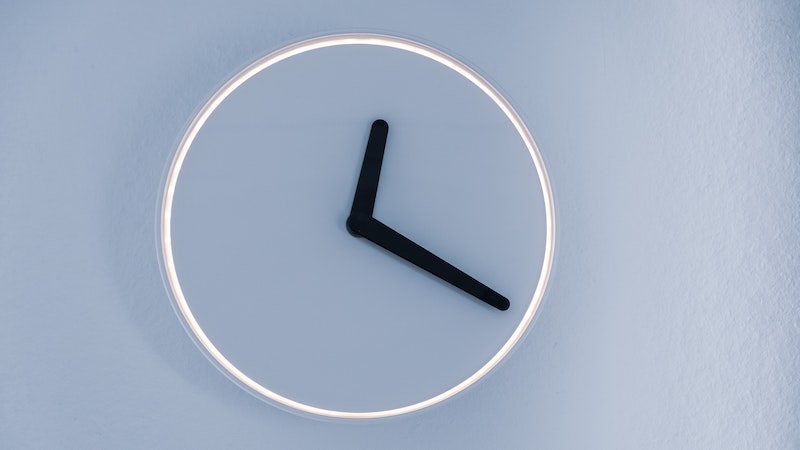The Seventh Habit: The Leisure Frontier
Episode #7 of the course Multihabit: A radical new approach to habit-tracking by John Robin
Welcome back to the course!
So far, we’ve worked on how to manage 6 habits. And, in the last lesson, we learned how the ultradian rhythm can help us set expectations on just how much time we can focus on a single task before we become distracted.
But there’s more to discover still, as we explore what happens upon adding a 7th habit.
Let’s see now where this takes us!
Discovering Your Seventh Habit
After spending some time tracking 6 habits, you’ll have a sharper sense of what’s left of your time and how you spend it.
At this point, as we consider adding yet another, it’s worth thinking about habit categories.
So far, we’ve discussed the “professional habits” category—that 20% of your time where you get 80% of your results.
There are two additional categories we will consider now for every habit we add:
• Self-improvement
• Leisure
In lesson 5, when creating our Pareto totals, we already saw that not all habits fit in the professional category. These remaining habits, then, go either in the “self-improvement” or “leisure” categories.
So far, we’ve seen some habits that fit in “self-improvement”.
For example, my “reflection” habit and Mary’s “journaling” habit are great examples of this. The “workout” habit we all had in common is also an example of this—with the exception of Mary, who, you’ll recall, defined her “workout” habit as part of her “professional habits” since it contributed to the 80% results that helped her lead a meaningful retired life.
We’ve seen some habits that also fit in “leisure”, such as Mary’s “spider solitaire” or Susan’s “Duolingo”.
The important point at this step in our process is that now these categories give us some further ways to search for other habits.
My discovery: Following Mary’s lead.
For my 7th habit, I copied Mary’s “social” habit. I found I spent about the same amount of time as her—10%—on this habit. However, since I am self-employed and already have defined my 20% Pareto threshold, the new “self-improvement” and “leisure” categories helped me see this as a part of leisure.
Not only was this useful, adding another 10% to the picture for me of how I spend my time, but it also gave me some perspective. Whereas I used to be stressed over whether or not I was spending too much time socializing, and not enough time working, now I had an exact measure and I could use the percentage in the spreadsheet to show me how much time I was spending on this other important aspect of my life.
And that’s all right, because I knew I was spending 20% on my professional habits, so I could enjoy this time without guilt. But I also knew, if I needed to do an extra push on my professional habits, that there was time here I could divert.
Mary’s discovery: Another leisure frontier.
Mary really set the stage for us to appreciate that tracking time on our most important habits doesn’t just mean being productive.
This extended from her first great insight early on in the process: tracking “spider solitaire” let her think beyond just being productive.
Now, some people might want to be nothing but productive all day long. Good for you.
For Mary, she was more interested in life balance. Just like “spider solitaire” she realized, when considering the new “self-improvement” and “leisure” categories, there was something else she wanted to track:
• Watching TV
Tracking TV time she thought was a great way to map out how she spent some of her leisure time, since she enjoyed watching TV shows or movies quite a lot. Before using this system, she’d never thought of considering it a single-focused habit, as it often was just something she did passively.
But now having a timer for it, she was able to treat her “TV” habit like the others. She found she spent 6% of her time on it and it was useful to know what kind of slice of the 100% pie of her time this leisure habit used up.
Susan’s discovery: Out of sight, out of mind, more focus.
Susan wasn’t sure about tracking her social time, but after what she discovered with her “Duolingo” habit, she was willing to try and experiment.
Her initial resistance to the idea was, when she was with friends, she didn’t like the idea of timing things. It seemed like an artificial way to live.
However, she discovered the exact opposite effect.
When she was with friends, she simply hit her “social” timer then put her phone away. She found she was actually more immersed in her relationships and social time. In fact, she found she had kicked an old bad habit of taking her phone out often to scroll Instagram or check text messages. When her timer was on and her phone was away, she felt a new level of freedom from it and had more presence when spending time with other people. Treating “social” as a single-focused habit, she enjoyed having her phone out of sight, out of mind, as she deepened her focus on this other important area of her life.
Susan had no intention of setting any bounds on her social time. It was just a curiosity, helping her put an actual percentage to the time spent on yet another large slice of her life.
We called this step “the leisure frontier” since everyone at this point in the process picked leisure habits.
What about you? What are your leisure habits, and do you want to join us by adding “social” to the mix?
Warning: taking this step just might change you forever, for the better. Stay tuned for tomorrow’s lesson on habit 8!
Your next spreadsheet
Tracking 7 Habits • 2 Weeks • Group of 5 (See first tab for instructions)
Share with friends

